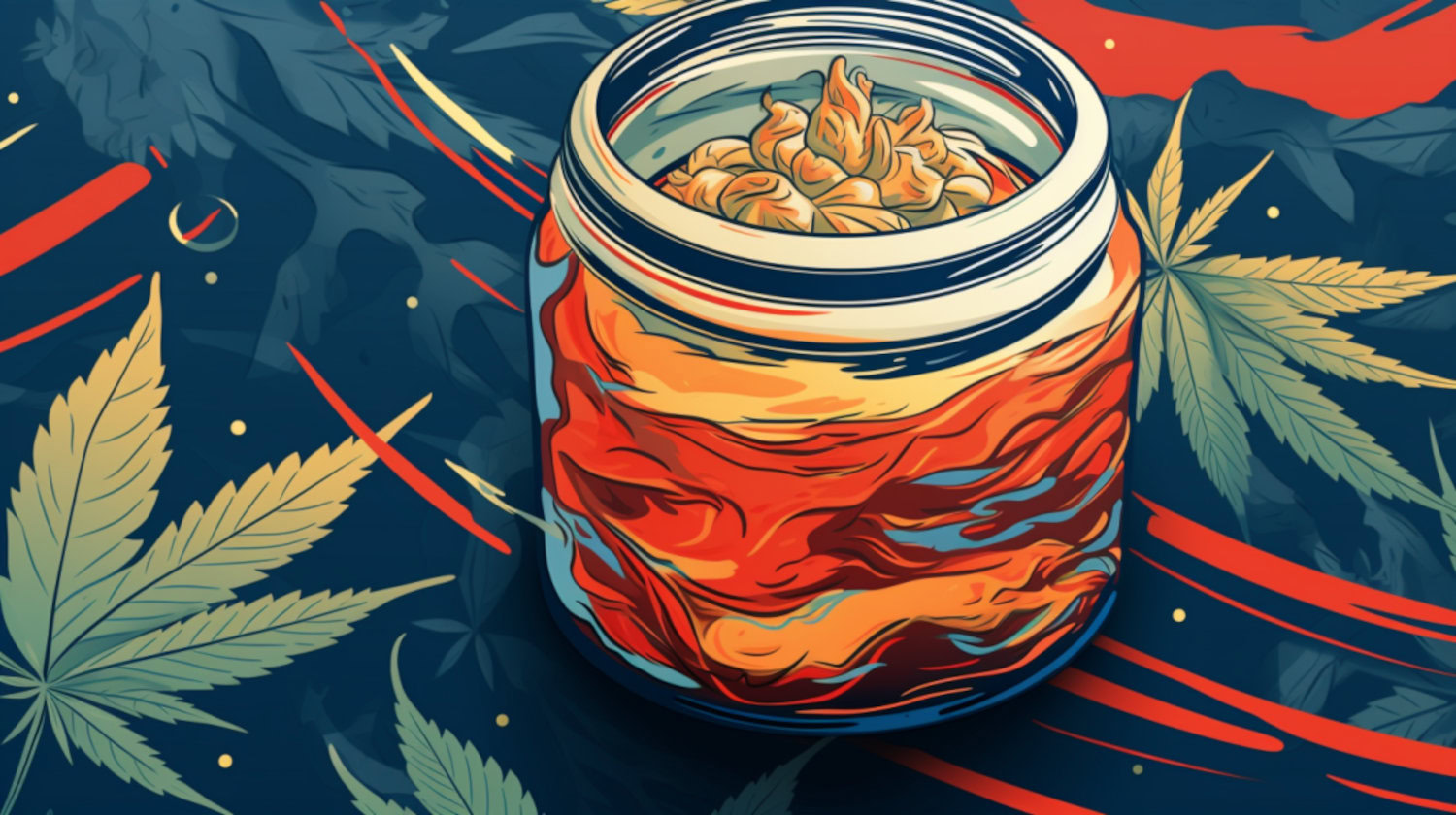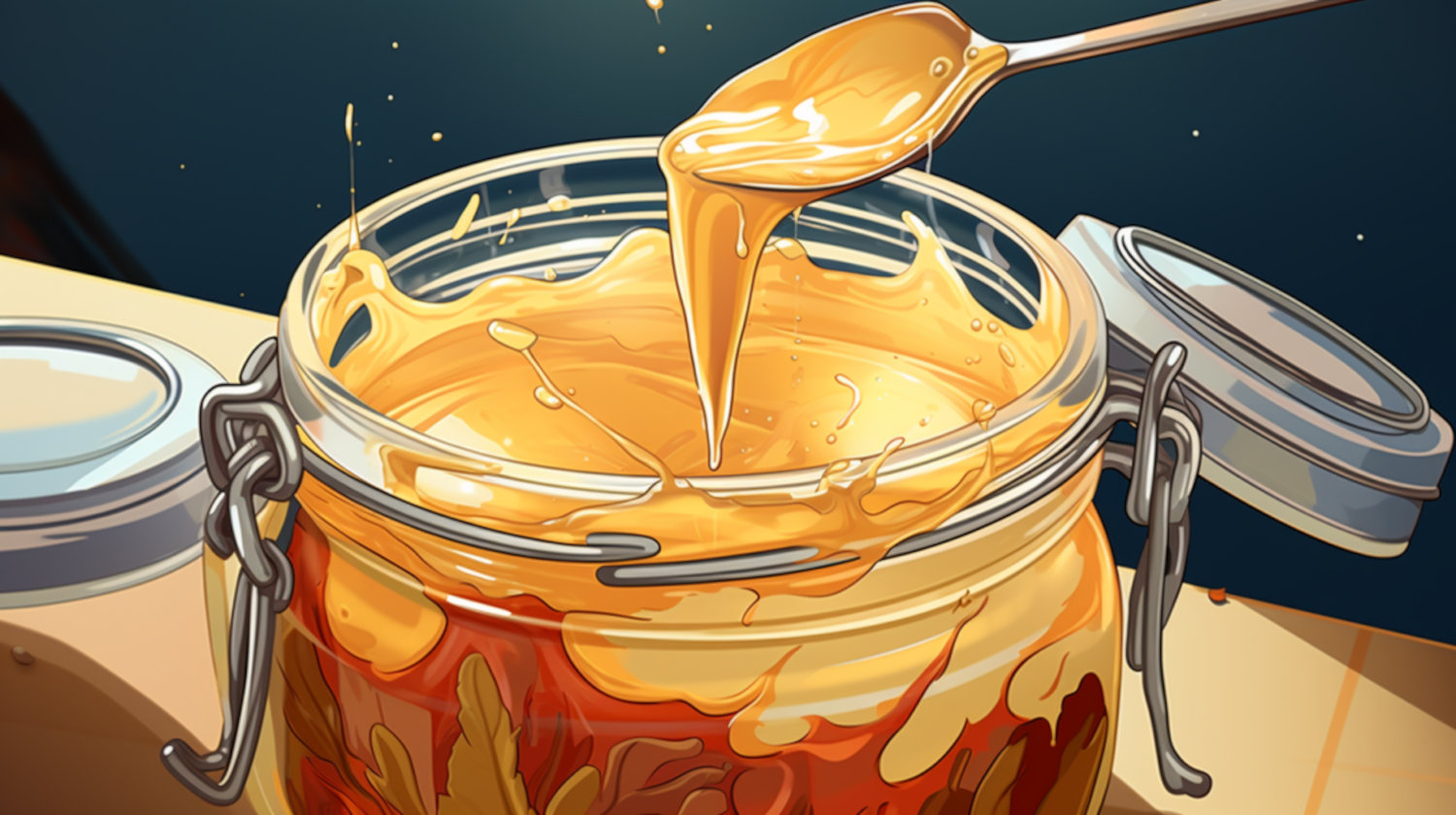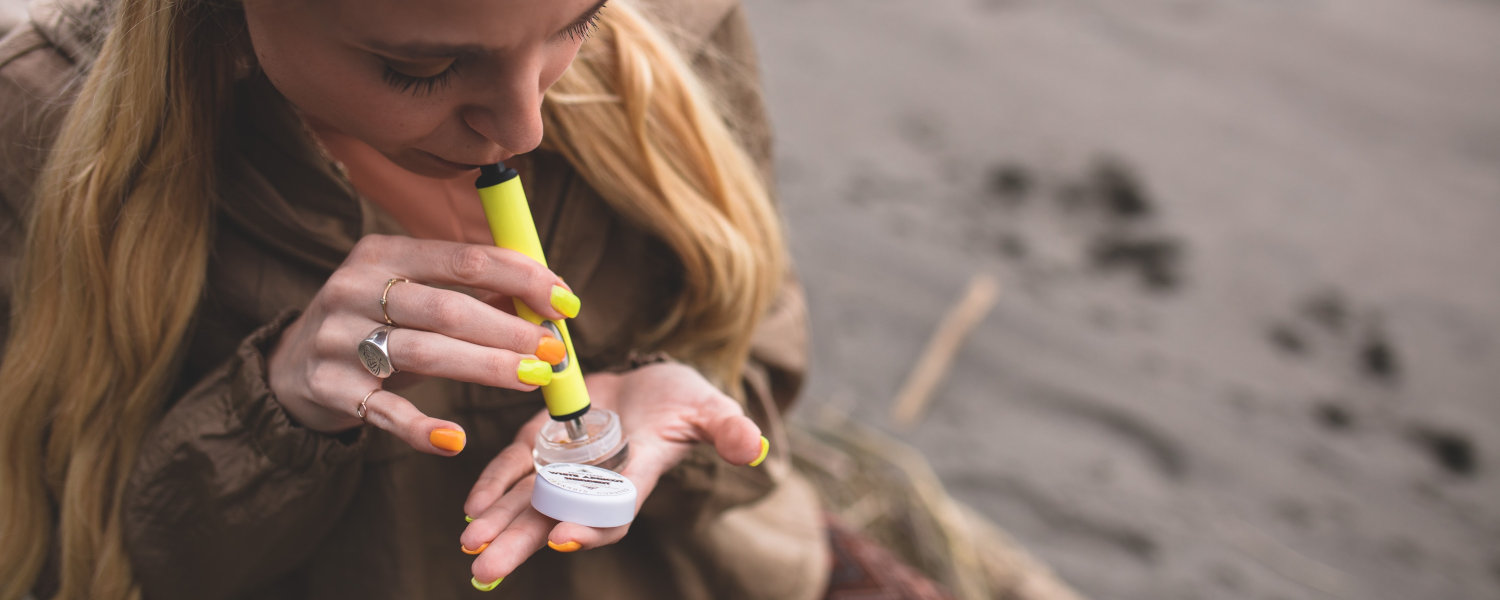In This Article
- What is Cannabidiol?
- What is Dabbing?
- Can You Dab CBD?
- What is Dabbing Cannabidiol Like?
- CBD Dab Effects: The Benefits
- Precision and Potency
- Rapid Onset of Effects
- Potential Health Benefits
- Relaxing and Enjoyable Effects
- What are the Risks of Dabbing CBD?
- Toxicity Concerns
- Potential Drug Interactions
- Regulatory and Labeling Issues
- Potential THC Content
- How to Dab CBD
- References
The popularity of CBD (cannabidiol) has risen in recent years. Touted for its potential to alleviate stress, reduce anxiety, and promote better sleep, the cannabinoid has emerged as an adaptable remedy embraced by many people.1
There are various ways to experience the benefits of CBD, from oils and edibles to topicals and capsules. Yet, amidst these consumption methods, some CBD enthusiasts seek something more potent and immediate – a desire that has piqued interest in dabbing cannabidiol.
Dabbing, a method commonly associated with consuming cannabis concentrates, involves vaporizing the substance and inhaling the resulting vapor. But is dabbing dabbing cannabidiol a good idea?
What is Cannabidiol?
CBD, short for cannabidiol, is a compound derived from the cannabis plant. Unlike its counterpart, THC (tetrahydrocannabinol), CBD doesn't induce intoxicating effects. Instead, patients have long used CBD for its potential therapeutic properties and diverse applications in promoting well-being.
The endocannabinoid system, a complex network of receptors, enzymes, and cannabinoids, is at the core of CBD's interaction within the human body. This system is involved in several bodily processes and physiological functions, including mood, sleep, appetite, pain, and immune responses.2
The endocannabinoid system consists of two primary receptors: CB1 and CB2. CB1 receptors are predominantly found in the brain and nervous system, influencing neurological functions. Meanwhile, CB2 receptors are primarily located in the immune system, impacting inflammation and immune responses.
CBD interacts indirectly with these receptors, stimulating the endocannabinoid system to maintain homeostasis, potentially contributing to various therapeutic effects. Some key benefits associated with CBD include its potential to alleviate stress, reduce anxiety, manage pain, improve sleep quality, and offer anti-inflammatory properties.3
What is Dabbing?

Dabbing is a form of cannabis consumption that involves the vaporization of concentrated cannabis products by applying them to a hot surface, called 'nails' or 'bangers.' Once the concentrate reaches the ideal temperature, it vaporizes, creating a potent vapor that is inhaled through the dab rig or water pipe.
Products used for dabbing primarily include concentrated cannabis extracts, such as wax, shatter, budder, or oil. These concentrates are derived through various extraction processes that isolate the most potent parts of the cannabis plant, resulting in a product with significantly higher cannabinoid content compared to traditional cannabis flower.
CBD dabs specifically refer to concentrated CBD extracts designed for dabbing purposes. These oils contain high levels of CBD and are favored by individuals seeking the potential therapeutic effects of CBD in a more concentrated form.
However, while dabbing offers a rapid onset of effects due to the high concentration of cannabinoids, there are concerns regarding the potential risks associated with this method. Studies, such as those exploring the toxicity of cannabis concentrates, have raised concerns about possible health risks and the purity of concentrates used for dabbing.4
Can You Dab CBD?
CBD and its potential benefits have got plenty of people wondering about dabbing cannabidiol.
Yes, it is possible to dab CBD, and a variety of CBD concentrates specifically crafted for dabbing purposes are available in legal markets. These concentrates, such as CBD dabs, oils, crumbles, or waxes, are meticulously extracted to isolate high concentrations of CBD from the hemp plant.
CBD dabs, in particular, are concentrated forms of CBD designed for dabbing purposes. They offer a potent and immediate way to experience CBD's potential therapeutic effects.
Fortunately, with all these CBD concentrate options out there, consumers can easily choose products that align with their preferences and desired effects. However, it's always important to prioritize quality, purity, and safety.
What is Dabbing Cannabidiol Like?

Dabbing CBD offers a unique experience compared to other consumption options due to its rapid onset of effects and increased potency. When dabbing CBD, users may expect quicker and more pronounced effects compared to methods like oral ingestion or topical application.
However, these effects can vary based on several factors, including the concentration of CBD in the dab wax and an individual's tolerance.
Studies have shown that vaporized CBD produces increased ratings of pleasant drug effects, more prominently than oral CBD. Also, CBD-dominant cannabis, containing low THC levels, can induce more potent subjective effects compared to pure CBD due to the presence of THC, even if at low concentrations.
One common question often raised about dabbing CBD is whether it induces a "high" similar to THC. Unlike THC, CBD is non-intoxicating and does not produce the effects associated with feeling high. However, the presence of THC in some CBD concentrates or the unregulated market may result in unintentional THC intake, causing more pronounced effects than CBD alone.5
The delivery method plays a crucial role in the experience of dabbing CBD. Smoking or vaporization allows for rapid delivery of CBD, with effects occurring within minutes following inhalation.
This speedy onset is due to the direct entry of CBD into the bloodstream via the lungs. However, oral mucosal routes, like tinctures or other sublingual products like tablets, may also offer a faster onset than traditional oral ingestion, circumventing some absorption issues associated with edible CBD products.6
CBD Dab Effects: The Benefits
So, why might someone opt for dabbing CBD, and what are the potential benefits of doing so?
Precision and Potency
One of the primary reasons for choosing to dab CBD lies in its precision and potency. CBD concentrates, such as wax or shatter, offer a higher concentration of cannabidiol compared to other CBD products. This elevated potency enables users to experience the effects of CBD swiftly and more intensely. For individuals requiring higher doses or seeking rapid relief, dabbing CBD can be a good choice.
Rapid Onset of Effects
Another enticing aspect of dabbing CBD is the immediate onset of effects. When vaporized, CBD is rapidly absorbed through the lungs, so users can experience its potential benefits within minutes. This quick action makes dabbing an attractive option for managing conditions where immediate relief is desired, such as acute pain or anxiety episodes.7
Potential Health Benefits
Dabbing CBD presents an effective means of leveraging its therapeutic potential. CBD interacts with the endocannabinoid system, which may benefit sleep, pain relief, stress, inflammation, and more. Considering the potency and rapid onset of cannabis concentrates, CBD dabs may help patients feel these effects quickly.
Relaxing and Enjoyable Effects
Finally, CBD dabs can simply be a great way to relax. CBD can help to induce relaxation and promote a sense of calmness. When consumed through dabbing, CBD may swiftly alleviate tension and promote a tranquil state of mind without the intoxicating effects associated with THC.
What are the Risks of Dabbing CBD?

While dabbing CBD offers rapid effects and potency, there are potential risks that users should be aware of when considering this consumption method.
Toxicity Concerns
Research has indicated that dabbing may deliver significant amounts of toxic degradation products. Difficulty in controlling the nail temperature during dabbing can expose users to toxic compounds such as methacrolein and benzene. The increased use of terpenes in cannabis concentrates poses oxidative risks as well when heated, which raises concerns about the safety of flavored e-cigarette products and dab oils.8
Potential Drug Interactions
Some studies have reported CBD-induced drug interactions (primarily for epilepsy and psychiatric medications), which can cause liver problems, diarrhea, fatigue, vomiting, and somnolence (the strong urge to sleep), particularly at doses higher than recommended for human therapies.9 Considering how potent CBD dabs are, there may be a heightened risk of these adverse side effects when combined with
Regulatory and Labeling Issues
Another risk factor involves the lack of regulation in the CBD market, leading to product quality and labeling accuracy inconsistencies. Studies have revealed discrepancies in CBD concentrations among products purchased online, with some containing less CBD than labeled. This lack of uniformity in labeling accuracy and concentrations may affect the intended therapeutic effects and potentially lead to unforeseen outcomes for consumers.10
Potential THC Content
Of course, in an unregulated market, some CBD products may actually contain THC levels capable of producing more substantial effects than CBD alone. Using such CBD products, especially if you're not expecting to use any THC, can lead to unintended intoxication or heightened physiological responses, such as anxiety and panic attacks.
How to Dab CBD
Dabbing CBD is not different from dabbing other cannabis concentrates. Here's the step-by-step guide on how to dab CBD:
Tools and Materials Required:
- Dab Rig: A device used to vaporize and inhale concentrates. It typically consists of a water pipe or glass apparatus with a nail or banger attachment.
- Dab Nail or Banger: Usually made of quartz, titanium, or ceramic, the component is heated to vaporize the CBD concentrate.
- Dabber Tool: A tool used to handle and apply the CBD concentrate onto the heated nail.
- CBD Concentrate: CBD concentrate, such as dab wax or dab oil.
- Butane Torch or Electronic Nail (E-Nail): Used to heat the dab nail to the desired temperature.
How to Use CBD Dabs:
- Prepare the Dab Rig: Fill the water chamber of the dab rig to an appropriate level for proper filtration.
- Turn on the Torch or E-Nail: If using a butane torch, ignite it and adjust the flame to heat the nail. For an e-nail, follow the manufacturer's instructions to set the desired temperature.
- Heat the Nail: Use the torch to apply heat evenly to the dab nail. Aim to heat the nail until it reaches the recommended temperature for dabbing CBD. The ideal temperature typically ranges between 315°F and 550°F (157°C to 287°C), depending on the specific CBD concentrate and dab rig used.
- Prepare the CBD Concentrate: While the nail is heating, use the dabber tool to place a small amount (a "dab") of CBD concentrate onto the heated nail. Be cautious not to touch the hot surface directly with your fingers.
- Inhale the Vapor: Once the CBD concentrate is placed on the nail, slowly inhale through the mouthpiece of the dab rig, drawing the vapor into the rig. Rotate the dabber tool so the concentrate vaporizes evenly.
- Exhale and Clean: Exhale the vapor gently. After each use, clean the dab rig and tools to maintain cleanliness and optimize future sessions.
- Adjust and Experiment: Adjust the temperature and the amount of CBD concentrate used to find the optimal dabbing experience that suits your preferences.
References
- Moltke J, Hindocha C. Reasons for cannabidiol use: a cross-sectional study of CBD users, focusing on self-perceived stress, anxiety, and sleep problems. Journal of Cannabis Research. 2021;3(1). doi:https://doi.org/10.1186/s42238-021-00061-5 ↩︎
- Lu HC, Mackie K. An Introduction to the Endogenous Cannabinoid System. Biological Psychiatry. 2016;79(7):516-525. doi:https://doi.org/10.1016/j.biopsych.2015.07.028 ↩︎
- Peng J, Fan M, An C, Ni F, Huang W, Luo J. A narrative review of molecular mechanism and therapeutic effect of cannabidiol (CBD). Basic & Clinical Pharmacology & Toxicology. 2022;130(4):439-456. doi:https://doi.org/10.1111/bcpt.13710 ↩︎
- Alzghari SK, Fung V, Rickner SS, Chacko L, Fleming SW. To Dab or Not to Dab: Rising Concerns Regarding the Toxicity of Cannabis Concentrates. Cureus. Published online September 11, 2017. doi:https://doi.org/10.7759/cureus.1676 ↩︎
- Spindle TR, Cone EJ, Goffi E, et al. Pharmacodynamic effects of vaporized and oral cannabidiol (CBD) and vaporized CBD-dominant cannabis in infrequent cannabis users. Drug and Alcohol Dependence. Published online April 2020:107937. doi:https://doi.org/10.1016/j.drugalcdep.2020.107937 ↩︎
- Millar SA, Maguire RF, Yates AS, O’Sullivan SE. Towards Better Delivery of Cannabidiol (CBD). Pharmaceuticals. 2020;13(9):219. doi:https://doi.org/10.3390/ph13090219 ↩︎
- MacCallum CA, Russo EB. Practical considerations in medical cannabis administration and dosing. European Journal of Internal Medicine. 2018;49(49):12-19. doi:https://doi.org/10.1016/j.ejim.2018.01.004 ↩︎
- Meehan-Atrash J, Luo W, Strongin RM. Toxicant Formation in Dabbing: The Terpene Story. ACS Omega. 2017;2(9):6112-6117. doi:https://doi.org/10.1021/acsomega.7b01130 ↩︎
- Huestis MA, Solimini R, Pichini S, Pacifici R, Carlier J, Busardò FP. Cannabidiol Adverse Effects and Toxicity. Current Neuropharmacology. 2019;17(10):974-989. doi:https://doi.org/10.2174/1570159X17666190603171901 ↩︎
- Bonn-Miller MO, Loflin MJE, Thomas BF, Marcu JP, Hyke T, Vandrey R. Labeling Accuracy of Cannabidiol Extracts Sold Online. JAMA. 2017;318(17):1708-1709. doi:https://doi.org/10.1001/jama.2017.11909 ↩︎
The information in this article and any included images or charts are for educational purposes only. This information is neither a substitute for, nor does it replace, professional legal advice or medical advice, diagnosis, or treatment. If you have any concerns or questions about laws, regulations, or your health, you should always consult with an attorney, physician or other licensed professional.




